The Feast of St. John the Baptist, or the Nativity of St John the Forerunner, sometimes called St. John the Baptist Day, is celebrated on June 24 in many places worldwide, though not much in the United States, as we’ll see below.
The celebration of the Feast of the Nativity of John the Baptist goes back at least a millennium and a half. The Council of Agde mentions the feast in 506 AD in its list of festivals. Most saints’ festivals are tied to their death, but John’s is an exception, being connected to his birth.
This famous painting of John the Baptist, at top, by Leonardo da Vinci, believed to be the artist’s last painting, hangs in the Louvre Museum in Paris.
Who was St. John the Baptist?
John the Baptizer (contrary to popular belief, he wasn’t a member of the Baptist denomination) was a contemporary of Jesus and the son of Jesus’ mother’s sister, Elizabeth, making him Jesus’ cousin.
As John grew up, he became a prophet in the tradition of Old Testament prophets. No prophet had been recorded since the time of Malachi at the end of the Old Testament, some 400 years earlier, at the end of the Old Testament canon.
John’s ministry attracted large crowds, and his message, in preparation for the coming of the Messiah, was:
“Repent, for the kingdom of Heaven is at hand.”
He operated along the Jordan River in the province of Judea. When people responded to his call for repentance, he baptized them at the Jordan River.
Notably, he baptized Jesus when he came to the river. The Gospel of Matthew tells us the heavens opened, the Spirit of God was seen descending like a dove, and the voice of God was heard to say:
“This is my beloved Son, in whom I am well pleased.”
Several paintings of John the Baptist feature his finger pointing up toward heaven, denoting the coming of Christ.
“…he who is coming after me is mightier than I.”
When asked by the Jewish priests and Levites, who the Sanhedrin had sent, if he himself was the Messiah (Christ), John answered:
“I am not the Christ… I am the voice of one crying out in the wilderness, ‘Make straight the way of the Lord.’ “
Birth of St. John the Baptist
How much older was John the Baptist than Jesus?
About 5 to 6 months. We know about John’s (pre-) birth from the Gospel of Luke. In the 24th verse of Chapter 1, we learn that John’s mother, Elizabeth, had been in seclusion for her pregnancy for five months.
In verse 26, Luke records the story of Jesus’ conception, which happened in Elizabeth’s sixth month of pregnancy. Luke has details in his Gospel that seem to have come from an eyewitness, someone older than Jesus or his disciples.
From the Acts of the Apostles in the New Testament (also written by Luke), we know that Luke traveled throughout Asia Minor (modern-day Turkey), sometimes accompanying the Apostle Paul. From the Gospel of John (not John the Baptist, but John the Disciple of Jesus), we learn that Jesus had entrusted his mother, Mary, from the cross into John’s care.
Later, tradition tells of John becoming the bishop of Ephesus in Asia Minor and that Mary accompanied him there. Luke likely interviewed her when he traveled through Ephesus.
So if Jesus were born on Christmas Day near the Winter Solstice, then six months earlier, John the Baptist would have been born around Midsummer, near the Summer Solstice.
Death of St. John the Baptist
John’s popularity attracted large crowds, which alarmed the authorities. The Roman-appointed tetrarch of Galilee and central Transjordan, King Herod Antipas, angered by John’s preaching, had him arrested and imprisoned.
Herod Antipas had married his niece Herodias, who had been married to his half-brother, Herod Philip I (aka Philip the Tetrarch, Herod Philip II). The situation was politically explosive, as Antipas had divorced his first wife, the daughter of King Aretas IV, a nearby Arab ruler. John told him:
“It is not lawful for your to have her.”
By denouncing Antipas, John’s public preaching might have unified his Jewish subjects with his semi-Arab subjects to oppose him.
On Herod’s birthday, the daughter of Herodias, Salome, danced before Herod and his guests. This pleased Herod so much that he promised the girl whatever she asked. Herodias suggested that her daughter request the head of John the Baptist on a platter. The king reluctantly obliged. Some of John’s disciples became followers of Jesus.
Fate of St. John the Baptist’s killer, Herod Antipas
After John’s death by Antipas, King Aretas, along with “fugitives from the tetrarchy of Phillip” (according to the historian Josephus), defeated Antipas in a war in 35–36 AD.
Antipas appealed to Rome for help from Emperor Tiberius, but the Emperor died, and Lucius Vitellius, governor of Syria in the north, withdrew his troops. Antipas died in exile, as my article on the Easter Players describes. Divine justice?
Where Is St. John the Baptist Day Celebrated?
The Roman Catholic, Eastern Orthodox, and Eastern Catholic Churches observe the Feast of St. John the Baptist. The Lutheran Church and the Anglican Communion also mark it. It is celebrated in Denmark, Norway, Sweden, Finland, Estonia, Latvia, and Lithuania.
In pre-Christian Europe, during pagan times, some believed that witches, dragons, and demons came out during Midsummer. Bonfires were thought to be a way of warding them off and driving them away.
Feast of St. John the Baptist in Northwestern Europe
As early as the 1200s, St. John’s Eve festivities in England were recorded, accompanied by songs, games, feasting, and bonfires.
In Florence, during medieval and Renaissance times, at this time of the year, people saw plays, held banquets, and processions followed by fireworks.
Because John the Baptist was the patron saint of Florence, Genoa, and Turin, bonfires, fireworks, and street markets occurred during the celebration.
France lit festive bonfires during this time in the early 20th century.
In northwest and southern Ireland, “Bonfire Night” on St. John’s Eve is held atop the hills.
In Germany, Johanneskraut (St. John’s herbs) are brought to church for a particular blessing at this time.
Feast of St. John the Baptist in Spain
Falling on Midsummer, the lighting of bonfires is a popular theme in Spain as well, where it is called “Saint John’s fires” as in other countries.
In many parts of Spain, especially Catalonia, fireworks accompany bonfires and special foods like Coca de Sant Juan on the day before the public holiday on the Eve of St. John the Baptist Day. In the Basque Country, it is called San Juan Eguna.
Feast of St. John the Baptist in Canada
In French, the feast day is known as Fête de la Saint-Jean Baptiste. French colonists brought it to Canada, where it was first mentioned in 1606. It was popularly celebrated in France during the Ancien Régime (before the French Revolution).
In Quebéc, it is celebrated as La Fête Nationale du Quebéc. It was first observed in 1834 and declared a public holiday in 1925.
Feast of St. John the Baptist in the US
As mentioned earlier, this feast day is not celebrated much in America, though there is a Bayou St. John in New Orleans.
Hollywood and St. John the Baptist
In 1940, Walt Disney released an animated film called Fantasia, set to music conducted by Leopold Stokowski. The penultimate selection was Night on Bald Mountain, written by Modest Mussorgsky, which depicts the demon Chernabog sitting atop a mountain unfolding his wings. However, the piece’s original title was St. John’s Night on Bare Mountain.
According to the film’s program, the piece is followed by the song Ave Maria, which provides “emotional relief to audiences tense from the shock” of Night on Bald Mountain.
Reflection
Some draw significance from John the Baptist’s quote from John 3:30, where he says,
“He [Jesus] must increase, but I must decrease.”
Following St. John the Baptist Day, after the Summer Solstice, the amount of daylight decreases until the Winter Solstice near Christmas, when it increases.
Bill Petro, your friendly neighborhood historian
billpetro.com
If you enjoyed this article, please consider leaving a comment.
Subscribe to have future articles delivered to your email.

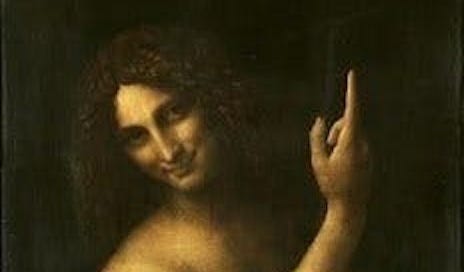



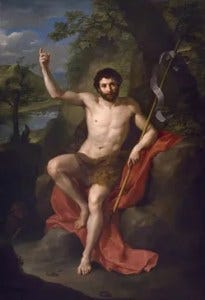
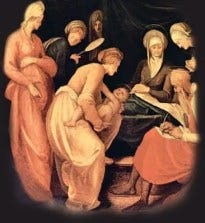
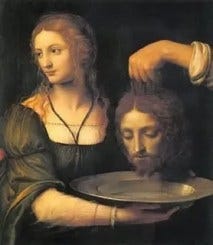

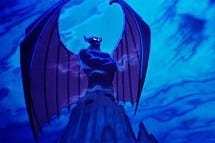
https://open.substack.com/pub/tylermgordon/p/chapter-1-come-and-see-the-gospel?utm_source=app-post-stats-page&r=5h8ez5&utm_medium=ios